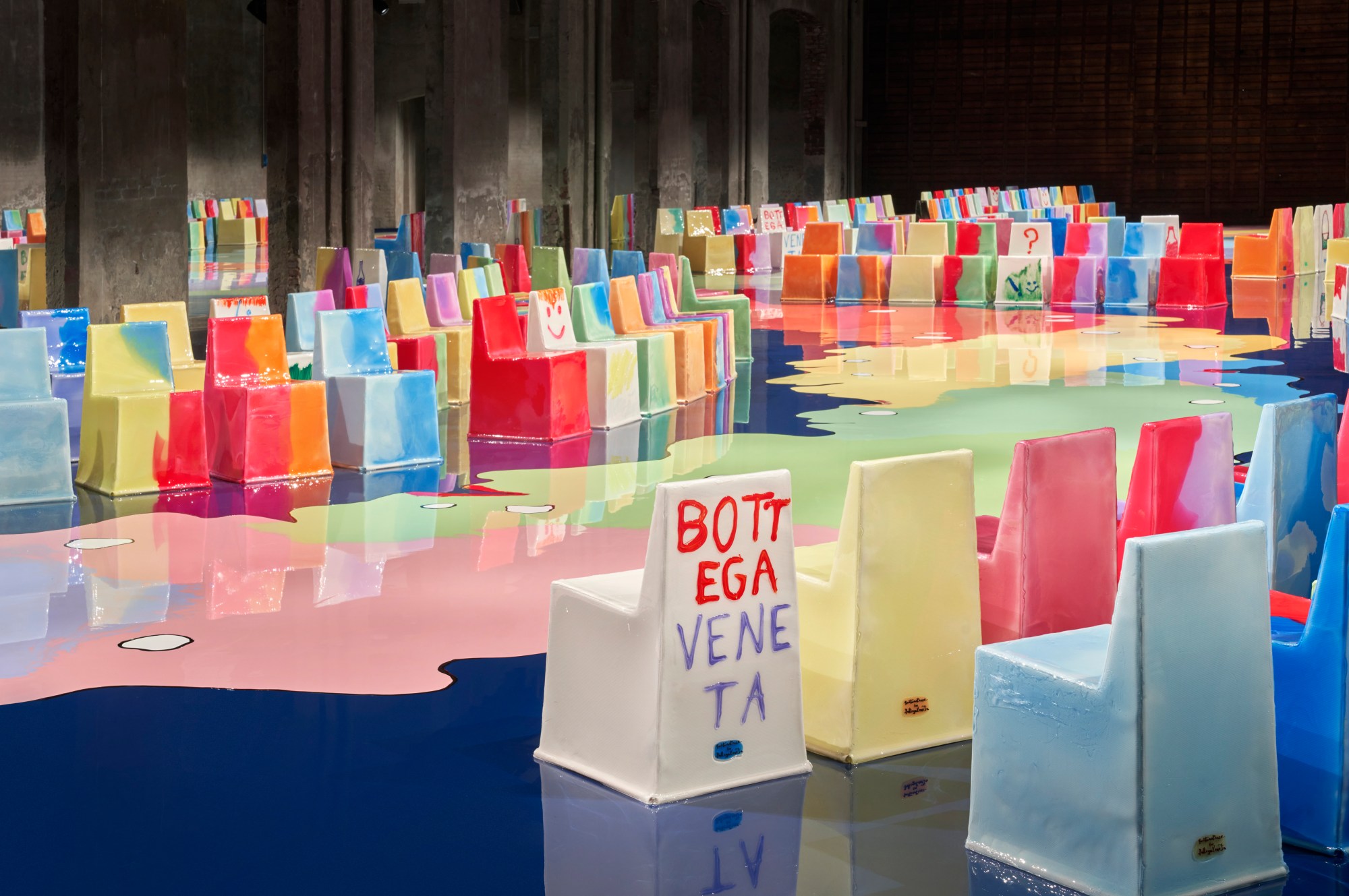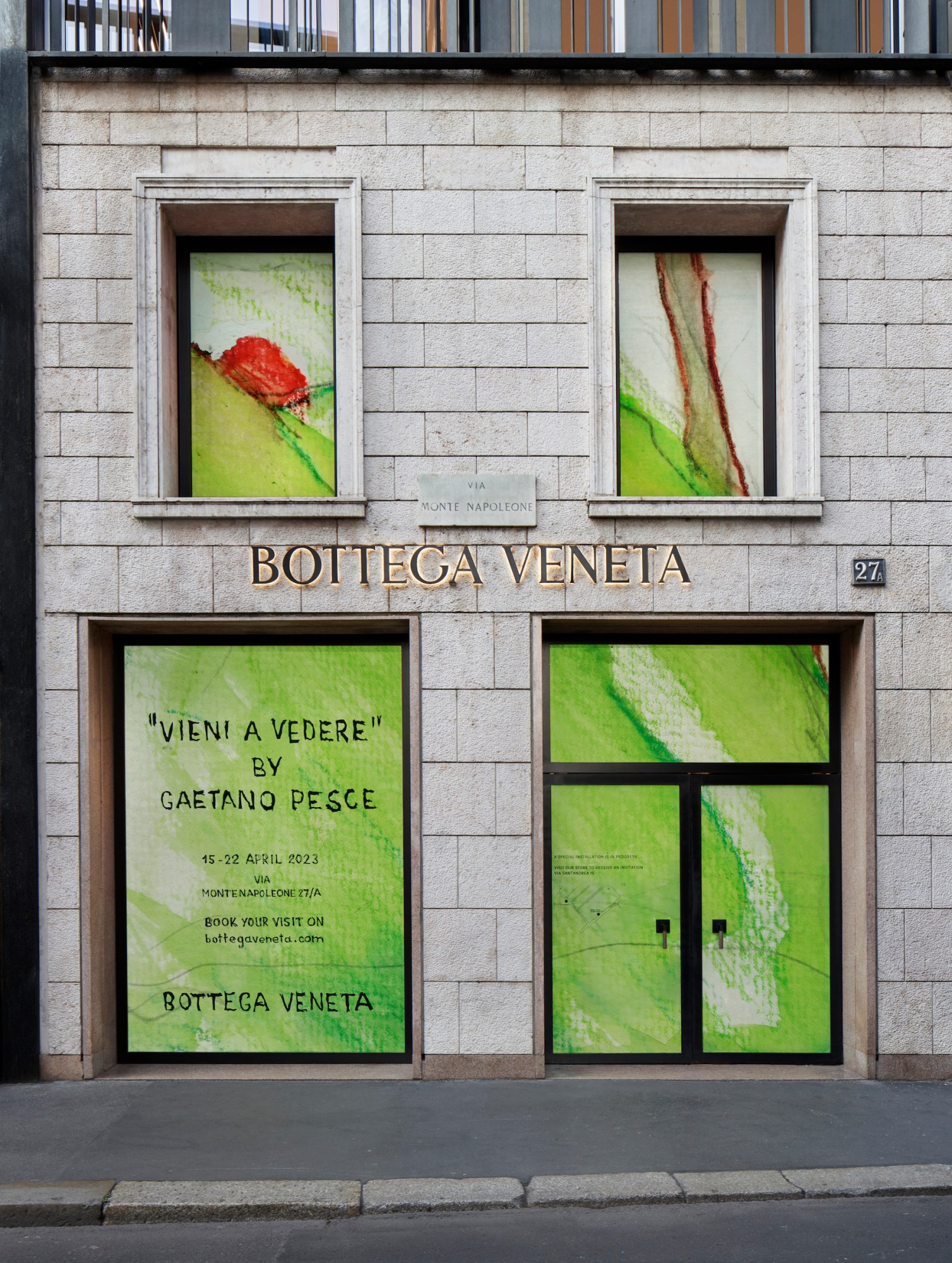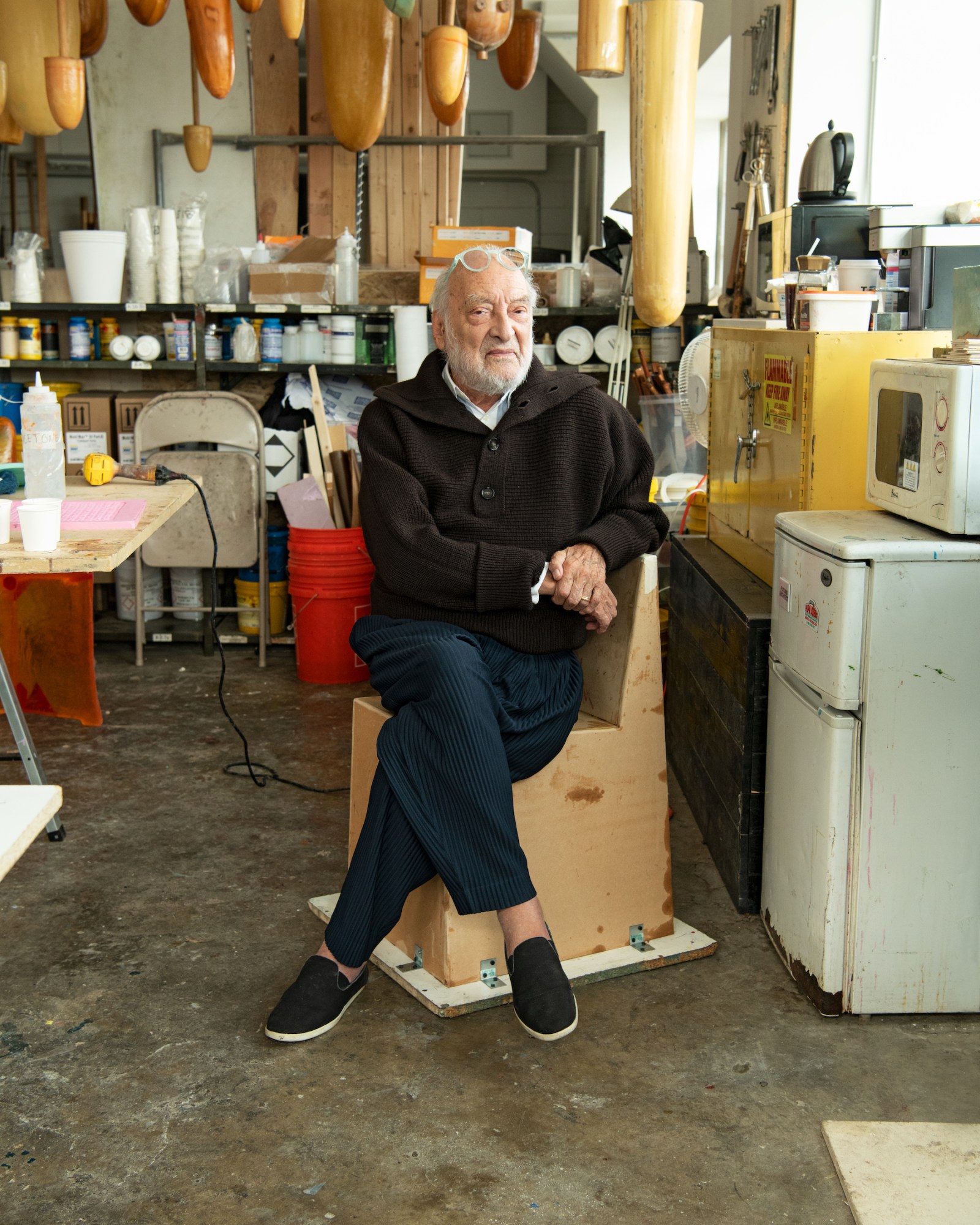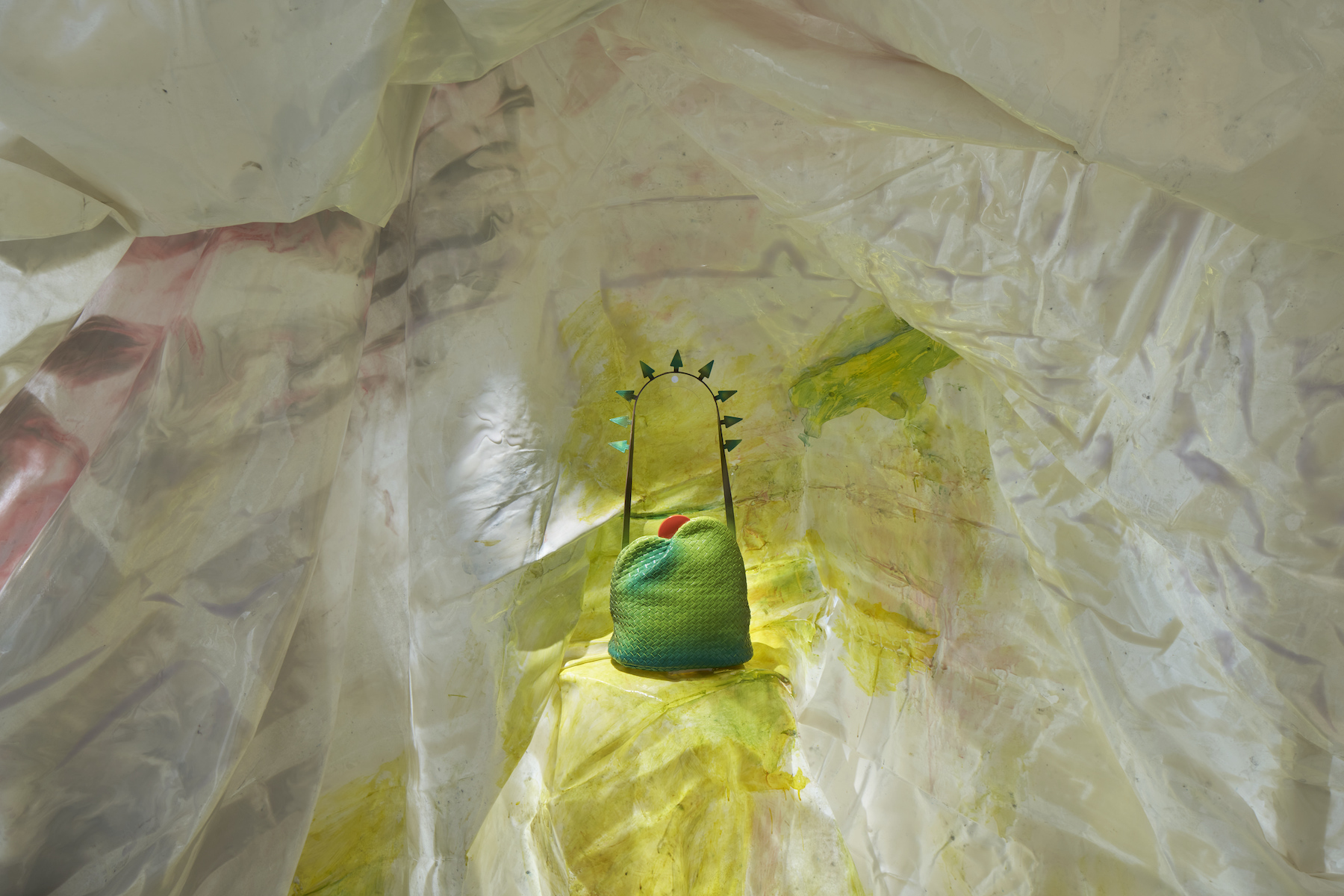At 83 years old, Gaetano Pesce is an icon of the design world. For decades, he has expanded the parameters of what a building, or even a lamp or a vase or a bracelet, can look and feel like; what it can be made from, and what it can represent. His colourful, often playful designs come in unexpected materials – most notably resin, which he pioneered as an industrial material because of its unique results on an assembly line – and his work across the fields of architecture (in which he was formally trained), urban planning, product design, furniture, lamps, sculpture, even fashion, have all bucked convention. Throughout it all, there is a sense of joyful colour, organic form, playful irreverence, and an emphasis on individuality – a testament to the designer’s enduring belief that repetition and uniformity are the biggest obstacles to the future of design. No object is the same, each one the result of craft techniques that offer a radical antidote to the industrialised shapes and materials that comprise most hallmarks of 20th-century design. Layered within those swirls of resin also lies a philosophical and political ethos: one that sees diversity and humanism as a means to progress beyond the past and into the future.
Ardent design aficionados know this. However, in the last year, Gaetano’s
work has reached new audiences, courtesy of an ongoing commissions from Bottega Veneta’s creative director Matthieu Blazy. For the designer’s debut show for the house in Milan last September, Gaetano designed the immersive setting, a kaleidoscopically colourful poured-resin floor with 400 one-of-a-kind resin ‘Come Stai?’ chairs, each one with organic and vibrant jolts of candy-like colour. Kate Moss subsequently posed nude on one for the accompanying campaign, and they and the chairs are now available to purchase via Bottega Veneta. The collaboration was followed by a slightly askew-shaped book, cementing the bond between the two creatives and heralding Gaetano as something of a muse for Matthieu’s own design manifesto: colourful, at times trippy, individualist, and subverting ideas of normality and uniform through material innovations. Case in point: ostensibly ordinary blue jeans and t-shirts that are, in fact, made of leather, with each piece the result of hours of handcraft.

Last week saw the latest chapter in the love affair between the Italian fashion house and the trailblazing designer. As part of Salone del Mobile – or Milan Design Week – Geatano transformed the lower floor of the brand’s Montenapoleone boutique into a resin cave – “the very first form of architecture,” as he pointed out during our conversation – in which visitors were guided towards two handbags that the designer dreamt up and the house’s expert craftspeople realised, totally one-off and deliciously off-kilter from any accessories found in other flagship boutiques nearby. The exhibition was titled ‘Vieni a Vedere’, which translates as ‘Come and See’, which thousands of people did, queuing to get a glimpse of the bags with spiky handles, bulging forms, and grass-hued patinas, inspired by the mountains and pine trees that Gaetano recalled seeing from the window of his childhood home in northern Italy.
That said, nostalgia is most definitely not Gaetano’s bag. The grotto he conceived continues his lifelong exploration of futurism – unlike the Italians who came before him who favoured mass production and sharp angles – comprising a rhizomatic, narrow walkway that barely allows for one person to get through at a time, encouraging each visitor to discover the space. It was about “the discovery of the language of representation; […] opening new ways for design,” as he explains below, when we caught up with him in Milan to hear more.

Gaetano, can you tell us about your first time at Salone del Mobile? It must have changed quite a bit since then.
My first time at the ceremony was in 1969, when I presented the chair that became famous – ‘Up’, which was done in 1967. It was in the shape of a woman with a ball on a chain, representing women as prisoners. It was the first political Italian design object. At the time, it was not really understood, but it then became very popular after many years — 54 years! That was an important time in design because it was a moment when design became figurative. It became an artistic expression, capable of not only being comfortable, or focussed on material, but it was also able to express a political situation, which, in this case, was that women suffer because men are scared of the progress that the women want to have.
From then on, my work became figurative and began expressing not only function, but also a political or religious point of view, or even a personal point of view. So, from that moment, design became art.
So, do you think the role of design right now is to be expressive, and also political? What is the political message of your work?
The colour has a function, which is very precise. It is expressing something contrary to the depression that we are living with – we have war, because we have stupid people who try to convince the world to be part of a dictatorship. So the function of design is also to discuss these things. And this is very important that you say that in your magazine: that a chair is only a chair. A chair can be a portrait of a moment in history, and a chair can express freedom. It’s important to say, because young people designing today don’t know what to do and they need someone to open a door to a new expression.
Your work is unrelenting in its futuristic outlook. Do you find yourself ever looking back in order to look forward?
I use materials that are part of my time, not materials that are part of the past. I try never to look to the past because, the future is better than the past. The past is a rigid moment, the future is elastic, open to everything.
Looking back at your earlier work and your use of resin, for instance, it was pretty radical and revolutionary, and also resonated with technological advancements in synthetic materials. How do you feel about technology today? As a designer, it’s very interesting to consider that maybe a machine is capable of design, how does that change the role of a designer?
If I had a robot that cleaned my house, I would be happy, but if the robot started to break the windows and furniture, then I would not be happy. If a robot became independent from my will, it would be a problem. When it comes to artifical intelligence, I’m happy to use this, but it would be a problem if it became separate from my will. But it also begs the question: is a machine so intelligent to make a new kind of design? Or it is only able to repeat what was already designed? I don’t think a machine can invent. Machines can execute a will, but not invent. I believe that the only thing that can execute this kind of escalation, in the present or in the future, is the human mind.

Let’s talk about the installation that you made for Bottega Veneta. Can you tell me a bit about what you wanted it to express?
The cave is the number one example of architecture — it is the beginning of architecture. So, there is that representation of the beginning of architecture and the beginning of design, because it was also the beginning of figurative objects. The bags I designed are about the mountains and the prairies, something to show that there can be positivity in nature.
A lot of your work though feels very joyful and very positive, but do you do you ever kind of feel as though you want to bring darkness into your work?
An example of that was a table I did: the Golgotha table in 1973. This was done in a technique that is a little complicated to explain, but essentially it was done with bricks, and the connection between one brick and another was a red resin. It was a table about the Ascention of Jesus Christ, talking about the history of a very important culture. I am not Catholic, but it’s a very important part of my identity. It was representative of the death of a hero. After that piece, I believed that my function is to make people think about something positive, to be joyful, because we have so many sad and dramatic things that happen in reality.
Your work has spanned so many different fields over the years. I was in a market the other day and they had some of your jewellery that you had designed, and now you’re working with a fashion house. What do you find interesting about that space?
I come from a culture that gave way to the Renaissance, where there many people working across many disciplines. There were people like Leonardo [Da Vinci] who was making paintings, he was making machines, he was discovering human anatomy, etc. Michelangelo was a sculpture, a poet, a painter. They demonstrated that there are no limits to expression, and the specialisation that we see taught in schools is wrong. We have to be open to all possibilities of artistic expression.

When I think about your work, part of what makes it radical is that it is imperfect, it embraces the imperfections, and it feels raw and fluid – and I think that’s very different to what fashion represents, which is very controlled and perfect.
When a fashion company starts to embrace what I suggest, which is a political idea that is important. A fashion company has the capacity to declare something to the world. In September, we were talking about diversity, which was very important because politicians constantly talk about how we are all the same – but you are different from me, and I am different from you. We are all unique. In 1972, talking about this kind of problem, I also said that not only are human beings different, but objects are different. At the end of the day, we want to give to people original objects we’ll give an original and that is art. Art is never a copy of something else.
You now have a new generation of young people who are discovering your work for the first time and perhaps their perception of your earlier work is very different to the perception that it had at the time. Do you find that shift in the perception of your work interesting, or even inspiring?
Absolutely. Otherwise, I will be bored by my work. Every day there is something to discover. We have a God that is very powerful, which is time, and time is an invisible presence that expresses new content. We have to be able to understand that the old values are disappearing and new values are appearing, which is very important. Time is not static. Time is constantly suggesting something else. I am very attentive to these kinds of things.
Lastly, what advice do you have for young designers today?
Inside us we have very important values that the education we receive at school doesn’t tell us it is important to express. Each one of us has something different, so maybe tomorrow we will have very rich expressions due to the fact that young people will express what they have inside, which is what I did all my life. I was not reading magazines or following fashion. I was following what I had inside and that is very important because it’s a way to be free. We don’t follow what the military say, or what is on TV, because that would be against personal expression. And I think the future is the result of personal expression.


